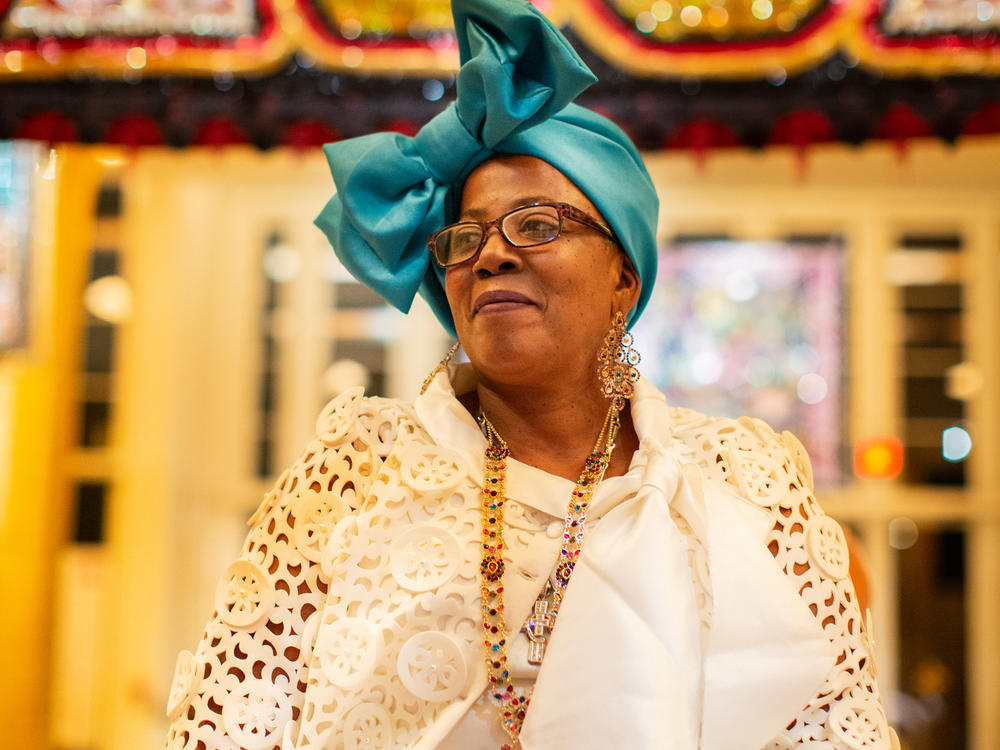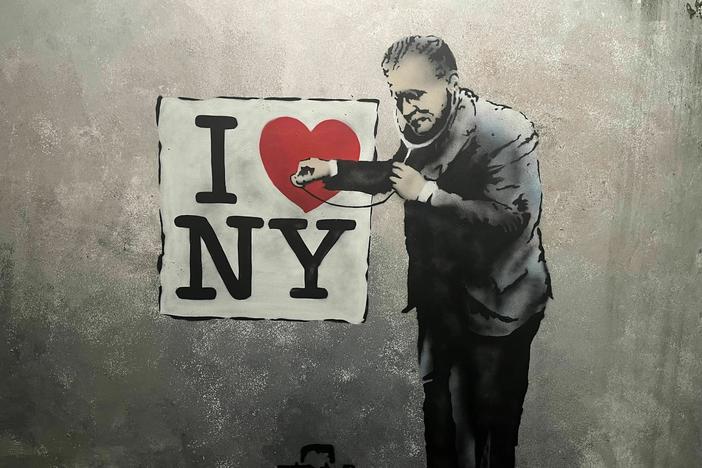Section Branding
Header Content
Myrlande Constant exhibition honors the labor of working-class artists
Primary Content
Updated March 30, 2023 at 8:29 AM ET
The work of Haitian artist Myrlande Constant is getting attention at the top of the contemporary art world. Her meticulously embroidered flags, known as drapos, were featured at the Venice Biennale last year, and she just wrapped up a New York gallery exhibition.
Now with a new show at UCLA's Fowler Museum, Constant becomes the first Haitian woman to have a solo show in a major U.S. Museum. Her work challenges the dominant narrative that Haiti is a place of chaos and despair.
Jerry Philogene, who co-curated the show, says she was mesmerized by the work.
"I saw each bead individually sewn to create an image, to outline a shape, to create eyes, create lips, create even colored nails. And I thought of the labor it takes to do that, intense labor. The intense hand and eye coordination was amazing."
Constant covers every inch of fabric with thousands of glass beads and sequins to create glittering scenes using symbols and imagery from her vodou faith. Many of the pieces are almost sculptural in texture and depth. Constant's art is the work of many hands, with as many as ten people working on a single drapo together.
"To provide a space where people can actually come together and work on a project collectively is providing a safe haven for the difficulties that are existing right now in Haiti," says Philogene. "That sense of knowing that you're creating something that is in a way bigger than yourself and goes beyond who you are in Haiti."
Constant left a Haitian wedding dress factory more than 30 years ago and began to apply her skills to sewing drapos, which had been a male-dominated craft. She changed tradition by adding glass beads and sequins. She also hired other women who had left the dress factory and taught them to create their own vodou drapo.
Constant considers her artistic practice to be a gift that comes from her ancestral spirits.
"There are some people who think we are in the business of selling the image of the lwa (spirits)," Constant says in a film that accompanies the Fowler Museum show. "But we don't sell their image. We work with them, because the spirits are always with us. We don't see them but they are all around us. All over the world."
As Constant's art is gaining international recognition, Haiti is sinking deeper into political instability and violence. There are no elected leaders in Haiti's parliament. Schools and hospitals are closing, and the national police are outgunned by gangs which control much of the capital, Port-au-Prince. Hunger is widespread throughout the country.
In fact, Constant was unable to get a visa to attend the opening of her show due to this instability. Still, Constant is dedicated to depicting Haiti as more than a country in despair, as in her piece about the catastrophic 2010 earthquake.
"She does not show us dead, disposable black bodies," says Jerry Philogene, the curator. "She shows us in this particular piece people burying their dead people trying to get folks out of burnt buildings, out of destroyed buildings, people kneeling and crying and asking for help. Families feeding each other."
She sees hope in the work.
"There is also the possibility of a different type of future, and her work is helping us imagine what that future might look like. A future that is both honoring the sacred and the secular."
Katherine Smith, a lecturer in the Department of World Arts and Cultures at UCLA, said that Constant does not allow her life or her art to be defined by the structural violence around her.
"She is well aware of these things, but she also works on another plane. Like, that's not the whole existence for her, and maybe that's where liberation is in her work."
Copyright 2023 NPR. To see more, visit https://www.npr.org.
Bottom Content




